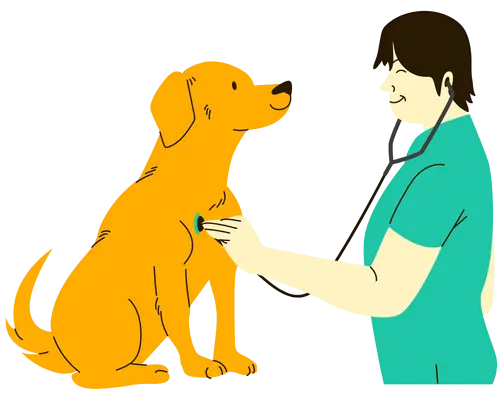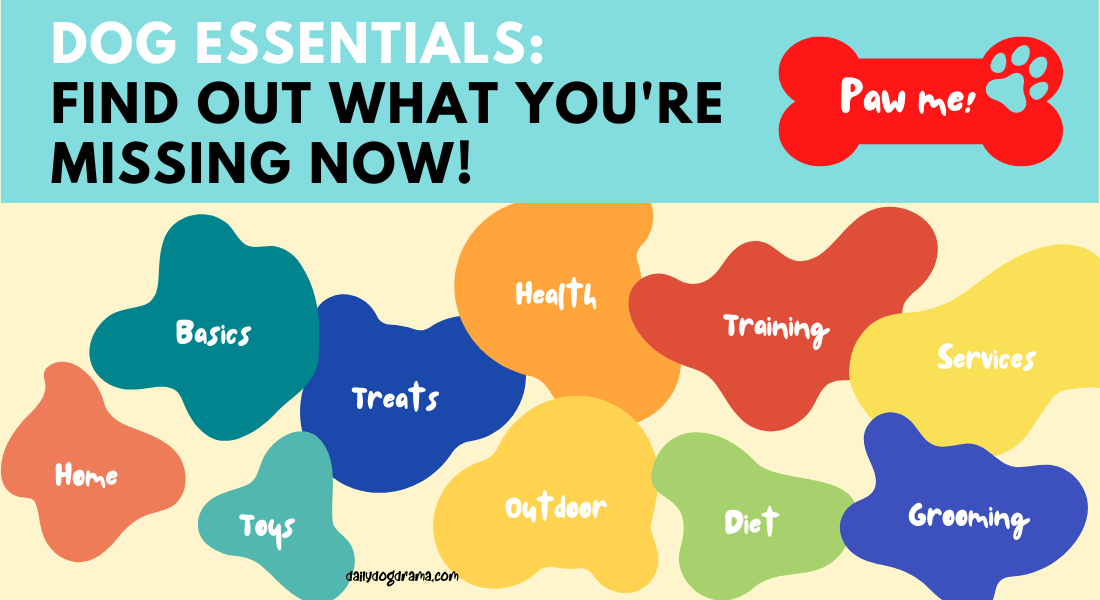Do you know what DOG ESSENTIALS you are missing out? Find out now!
Zack Keithy, our author, is a certified veterinarian technician (UC Blue Ash) for over 6 years (contact him here). The articles written here are based on his expertise and experience, combined with a review by our expert vet reviewers including Dr M. Tarantino. Learn more about us here.
Are you a proud Rat Terrier parent, eagerly anticipating the pitter-patter of tiny paws? Curiosity piqued about just how many adorable bundles of joy your beloved furry friend might bring into the world?
Rat Terriers have on average between 5 to 7 puppies in a single litter. The actual number can vary depending on factors such as the health and age of the mother and the size of the litter in her genetic line.
In this post, I will dive deep into the world of rat terrier pregnancies and provide some important information for dog owners or potential breeders to consider.
Medical Questions? Talk to a Veterinarian 24/7.
Connect one-on-one with a licensed vet who will answer your questions in minutes.
*Article may contain affiliate links to retailers like Amazon and Chewy. Learn more on our disclosure page.
- How Many Puppies Can a Rat Terrier Have in One Litter?
- How Big Is a Rat Terrier Puppy at Birth?
- How Many Healthy Litters Can a Rat Terrier Have in Their Lifetime?
- What Determines the Number of Rat Terrier Puppies in a Litter?
- When Can You Breed a Rat Terrier?
- What Age Do Rat Terriers Go in Heat?
- How Do You Know if Your Rat Terrier is in Heat?
- How Often Do Rat Terriers Go Into Heat?
- How Long Does a Rat Terrier Stay in Heat?
- How to Tell if My Rat Terrier is Pregnant?
- How Long is a Rat Terrier Pregnant for?
- How Do I Know When My Rat Terrier is About to Give Birth?
- Routine Care Tips for a Pregnant Rat Terrier
- Should You Breed a Rat Terrier?
- Frequently Asked Questions (FAQs)
- In Conclusion: How Many Puppies Can a Rat Terrier Have?
How Many Puppies Can a Rat Terrier Have in One Litter?

When it comes to reproduction, a Rat Terrier has 5 puppies on average in one litter. This number typically ranges between 5 and 7.
Here’s the thing: the number of puppies a Rat Terrrier can have in one litter depends on several factors, including the age and health of the mother, which I will share more about later.
How Big Is a Rat Terrier Puppy at Birth?
Rat Terriers are small to medium-sized dogs, and their puppies are tiny bundles of joy when they enter the world.
On average, these pint-sized pups typically weigh between 4 to 6 ounces (113 to 170 grams) at birth.
To put it in perspective, that’s about the weight of a small apple or a deck of playing cards.
Despite their petite size, Rat Terrier puppies are full of energy and curiosity from the moment they open their eyes.
Over the following weeks, they’ll grow rapidly, so cherish those early moments when they’re still small enough to fit in the palm of your hand!
How Many Healthy Litters Can a Rat Terrier Have in Their Lifetime?
All dog breeds don’t experience menopause and can get pregnant well into old age or until they get spayed.
However, that does not mean that a Rat Terrier should breed in consecutive heats as this can have a negative impact on its health.
In my opinion, dogs shouldn’t breed more than 4 to 6 times in their lifetimes, and they shouldn’t mate more frequently than once a year.
Overbreeding will cause your dog a lot of stress, which can lead to heart disease, arthritis, and infertility, among other health problems.
Stopping early also allows a breeder to spay their dog while they are still relatively young and let them enjoy a quality life in retirement.
Did you know that in some countries it is against the law to breed a dog more than four to six times during its lifetime? That speaks a lot about the importance of this point.
In the US, the American Kennel Club (AKC) does not accept registrations for dams that are bred over the age of 12 and under 8 months, and sires that are over the age of 12 and under 7 months.
What Determines the Number of Rat Terrier Puppies in a Litter?
In this section, we’ll discuss the key factors that determine the number of Rat Terrier puppies in a litter.
1. Age of the dam
In general, younger dams are more likely than older dams to produce larger litters.
This is because younger dams often have better reproductive systems and are more fertile, enabling them to lay more eggs and give birth to more puppies.
The general health of younger dams is also typically better than that of older dams, which can also result in a larger litter.
This is due to the fact that healthy dogs are necessary for successful reproduction, and unhealthy dogs may struggle to carry and deliver a litter of puppies.
2. Age of the sire
The father of your Rat Terrier will also have an impact on the size of the litter, although less so than the dam.
Even if the female is highly productive, there may be fewer puppies in each litter since the quality of a dog’s sperm begins to decline between the ages of 5 and 6.
Younger sires typically have higher sperm counts and greater fertility than older sires, which allows them to fertilize more eggs and produce more puppies.
My key message to you? Refrain from breeding senior dogs.
3. Health of the mom
Successful reproduction depends on a dog’s physical well-being, and unhealthy canines may have problems carrying and giving birth to a litter of puppies.
For instance, a healthy, successful pregnancy and a larger litter of puppies are more likely for a dam that is well-fed and receives routine veterinarian treatment.
It’s important to monitor a dog’s emotional and physical health before it gets pregnant and to make sure it gets lots of love, care, attention, exercise, and mental stimulation.
Additionally, nutrition has a big impact on how many puppies are born in a litter.
All year round, high-quality, protein-rich food should be provided to increase the possibility of producing a larger litter.
Mothers who receive inadequate nutrition, especially those who are overweight, frequently have smaller litters.
4. Size of dog
Dogs of the same breed can vary in size as well.
Just like us humans, some dogs have larger body frames than others, and that impacts a dog’s ability to carry puppies.
In general, a bigger litter is often more likely to be produced by larger dams, and vice versa.
5. Litter in which mom was born
Your Rat Terrier’s level of fertility will depend in part on the litter it was born into.
She’ll probably have a bigger first litter if she was born into a big litter herself.
On the other hand, if your girl was born in a small litter herself, you can typically expect that she will have a small first litter.
6. Type of breeding
Be aware that the type of breeding could have a big impact on the quantity and caliber of the puppies.
For instance, a litter will be of inferior quality if there is substantial inbreeding.
The puppies’ poor health can result in smaller litters, shorter lifespans, and an increased risk of genetic disorders (such as Von Willebrand’s disease).
When two dogs are closely related, these issues are more likely to arise.
Linebreeding, on the other hand, aims to maintain sufficient genetic diversity while preserving the best genes from a bloodline, making it frequently a safer method of dog breeding.
7. Time of breeding
It is said that a dam is more likely to have a larger litter size the closer it is to ovulation.
This is defined as the period after the estrogen period when the Luteinizing hormone triggers ovulation.
Unfortunately, I have not been able to find any studies supporting this theory, so at this point, I would say this factor is probably not that significant.
Hey there, sorry to interrupt but I wanted to tell you about an online vet service I’ve been using for years.
An in-person visit with one is great, but it’s not always an option.
Now, thanks to technology, you can speak to one without leaving your home.

Got something to ask a vet?
Talk to one anytime, 24/7.
* Don’t use this service for emergencies.
Alternatively, a vet can come out to you instead (exclusive to our readers: use THEVETS15 for 15% off).
SCHEDULE AN APPOINTMENT HEREThank you. The rest of the article continues below.
When Can You Breed a Rat Terrier?
When a Rat Terrier reaches its first heat cycle, it can start breeding, but this should be avoided.
They normally have their first heat cycle between the ages of 6 and 8 months, which is far too young for them to begin breeding.
If you want to allow your dog enough time to grow sexually and acquire weight and size, wait until she is at least in her second or third heat cycle.
Most ethical and responsible breeders will wait till a Rat Terrier is at least 2 years old before breeding them. This would give them sufficient time to complete all the necessary medical checks which can identify potential for inherited diseases or conditions.
What Age Do Rat Terriers Go in Heat?
Most female Rat Terriers go through their first heat cycle between the ages of 6 and 12 months, but there are instances when they only experience their first cycle at 18 months old.
If your girl hasn’t gone through her first heat cycle by the time she is 18 months old, speak with your veterinarian to rule out any underlying medical conditions.
A useful rule of thumb is that it will go into heat at about the same age that its mother did.
How Do You Know if Your Rat Terrier is in Heat?
There are several signs that a dog is in heat, or estrus, which is the period of time when a female dog is sexually receptive and can become pregnant.
The most common signs of a dog being in heat include:
- Swelling of the vulva: The vulva, which is the external genitalia of the female dog, may become swollen and enlarged when the dog is in heat. This swelling can be quite noticeable and is often the first sign that a dog is in heat.
- Vaginal discharge: During estrus, the female dog will produce a bloody or bloody-tinged vaginal discharge. This discharge is normal and is a sign that the dog is in heat.
- Increased urination: Female dogs in heat often urinate more frequently than usual. This is because the increased hormones in the dog’s body can cause an increase in blood flow to the kidneys, which can cause the dog to urinate more frequently.
- Increased affection: Female dogs in heat may become more affectionate and attentive towards their owners, and may also be more interested in male dogs. This increased attention and affection is due to the hormonal changes in the dog’s body during estrus.
- Behavioral changes: Female dogs in heat may exhibit changes in their behavior, such as restlessness, pacing, and whining. These behavioral changes are caused by the hormonal changes in the dog’s body during estrus, potentially making them more agitated, anxious, or display aggressive behavior.
Here are a few more points to look out for:
- Excessive licking of the genital area
- Holding its tail close to the body
- More receptive to male dogs
- Change in appetite
How Often Do Rat Terriers Go Into Heat?
A Rat Terrier will go into heat about once every 12 months, but this can vary depending on each individual dog, sometimes even up to 18 months.
Once your dog has experienced its first two 2 heat cycles, the period between them will be more consistent in time to come.
While some dogs’ cycles could be a little bit longer or shorter than others, you should be keeping track of when they happen.
Consult your veterinarian to determine whether there is anything that could be causing your dog’s variable seasons.
There is often more time between seasons as dogs get older (but can still get pregnant).
How Long Does a Rat Terrier Stay in Heat?
When we refer to a dog as being in heat, we typically mean that it is in the estrus stage of the heat cycle, which is when it actually sees “action” with a male dog.
The entire cycle is as follows, and it is during the estrus period when a dog will show all the signs discussed above:
- Phase 1: Proestrus (~7 to 10 days)
- Phase 2: Estrus (~5 to 14 days)
- Phase 3: Diestrus (~10 to 140 days)
- Phase 4: Anestrus (~6 months)
How to Tell if My Rat Terrier is Pregnant?
Here are the most common signs that your Rat Terrier is pregnant:
- Nipples enlarged
- Increased hunger
- Irritability (may have a short temper)
- Decrease in activity and energy levels
- Behavioral changes
- Weight gain
- Starts nesting
- Seeks more attention
When you notice all of these happening, and about 25 days have passed since mating, you should bring your girl to the vet for an ultrasound or a blood test to determine if it’s pregnant.
The test should also be able to tell you the number of puppies your dog is expecting.
You can also use this dog pregnancy calendar to help you out.
How Long is a Rat Terrier Pregnant for?

Rat Terriers, just like all other dogs, are usually pregnant for 56-64 days, or about 2 months.
There won’t be many obvious signs of pregnancy during the first two weeks as the changes are currently taking place internally within the uterus.
However, your dog will soon start to lose hair around the breasts, develop larger, darker nipples, and develop darker nipples at around 3 weeks of pregnancy.
How Do I Know When My Rat Terrier is About to Give Birth?
It is important to be aware that dogs usually give birth around 2 months (56 to 64 days) after getting pregnant so that you can prepare for it.
As the time draws nearer, there will be a number of telltale signs that your dog might be whelping soon.
- Spending more time in her “nest”
- Shivering
- Panting
- Straining
- Drop in body temperature
- Restlessness
- Vomiting
- Not eating much
- Digging and scratching
- Lethargy
- Start producing milk
Routine Care Tips for a Pregnant Rat Terrier
There are a number of things you can do to ensure your dog has the best chance of giving birth to healthy puppies.
Maintaining a canine’s health and happiness throughout pregnancy will help them feel comfortable and ensure a pain-free delivery.
If you are a breeder, consider getting pet health insurance through the Kennel Club (American) (United Kingdom).
Here are a few tips:
Regular checkups
You should plan routine visits with your veterinarian to keep an eye on your dog’s health throughout pregnancy.
Problems can be easier to deal with if they are discovered early on before they get worse.
This is particularly crucial if your dog exhibits any behavioral abnormalities or has even the faintest signs of illness in the last three weeks of pregnancy.
Remember to keep a check on her dental health as well to prevent any problems from getting worse.
Balanced diet
Your Rat Terrier needs to have a healthy, palatable, and easy-to-digest diet while she is pregnant.
She ought to consume a lot of protein (chicken is a terrific option), as well as some fruits and vegetables because of their vitamin and mineral content.
If you want to be extra careful about making sure your dog gets everything she needs during this time, you can add supplements to the diet.
However, a sudden diet change may make your dog find it difficult to adjust and lose interest in food, so be sure to introduce any new foods gradually.
If you are feeding raw food, more care must be taken to make sure it is clean and devoid of bacteria that might cause bloody diarrhea, which should be addressed as an emergency.
Quiet environment
By maintaining a peaceful and tranquil environment, you can help your dog feel more at ease during its pregnancy.
If there are lots of people walking in and out or creating a lot of noise, or maybe there are other lively pets around, your dog will feel confused and stressed.
A quiet room with a comfortable bed for your dog to rest on is ideal, but if you have other pets, be sure to keep them separate so they do not fight or disturb each other.
Activity
While pregnant dogs shouldn’t exercise vigorously, they can still benefit from regular brief walks, attention, and gentle play.
Yes, it’s true that they shouldn’t be overstimulated, but you also shouldn’t allow her to become too inactive since this can quickly result in health issues.
I’d advise giving your dog no more than two walks a day, each no more than 15 minutes.
During the last three weeks of pregnancy, a pregnant dog must be kept away from other dogs and animals; therefore, allow her to get some light exercise inside during this time rather than taking her outside.
Should You Breed a Rat Terrier?
Deciding whether or not to breed a Rat Terrier or any other breed of dog is a serious decision that should not be taken lightly.
Here are a few important considerations to keep in mind when deciding whether or not to breed a Rat Terrier, including:
- The health of the dam and sire: Before mating, it’s crucial to make sure the dam and sire are both healthy and free of genetic flaws or other health issues. If two unhealthy dogs are bred together, the puppies they produce may be sick or unwell, which could be painful for both the puppies and their owners.
- The age of the dam and sire: The dam and sire should be of suitable age before breeding. Female dogs should not be bred until they are at least 2 years old, and male dogs should not be bred until they are at least six months to a year old. Breeding dogs who are too young can lead to health problems for both the dam and the puppies.
- The availability of homes for the puppies: It’s important to carefully consider where the puppies will go after they are born before breeding a Rat Terrier. Although they make popular pets, there are also lots of them in shelters that are in need of homes.
- The cost and time involved in breeding: Breeding a Rat Terrier, or any other breed of dog, is a time-consuming and expensive process. Work out your sums before making a decision.
If you have any doubts, it would be wiser to leave it to a professional and reputable breeder or simply adopt one instead.
Alternatively, consider adopting one from the shelter or rescue. There are thousands of dogs that need our help too!
You might also want to check out the Rat Terrier Club of America for more information about this breed.
Frequently Asked Questions (FAQs)
How can I find a reputable Rat Terrier breeder?
To find a reputable Rat Terrier breeder, research online, ask for referrals, and visit their facility. Check credentials, ask about health testing, and request references. Ensure they provide health guarantees and avoid red flags like excessive litters or puppy mills. I would add that you should also trust your instincts throughout the process.
How can I confirm if my Rat Terrier is pregnant?
To confirm if your Rat Terrier is pregnant, consult a veterinarian. They can perform various tests including ultrasound, hormone assays, or physical examinations to detect signs such as enlarged mammary glands, weight gain, and behavioral changes. A veterinary consultation is the most accurate way to confirm pregnancy in a Rat Terrier.
How can I create a comfortable and safe whelping area for my Rat Terrier?
To create a comfortable and safe whelping area for your Rat Terrier, choose a quiet, warm, and clean space in your home. Provide a whelping box with low sides and soft bedding. Ensure good ventilation and easy access for monitoring. Keep it sanitized and have essential supplies like towels, heating pads, and a thermometer ready.
Can a Rat Terrier have a C-section, and when is it necessary?
Yes, Rat Terriers can have a C-section if necessary. It is typically required when natural labor is not progressing, or there are complications endangering the mother or puppies, such as a large litter or a pup stuck in the birth canal. Your veterinarian will make this decision based on the specific circumstances.
In Conclusion: How Many Puppies Can a Rat Terrier Have?
Understanding Rat Terrier pregnancies and preparing for the arrival of their adorable puppies requires careful research, planning, and veterinary guidance.
Whether you’re a breeder or a dedicated pet parent, ensuring the safety and well-being of both the mother and her precious pups is a rewarding and heartwarming journey.
Consider adopting one from a shelter or rescue group if you’re unsure whether you should breed them!
You’ve made it to the end, but I hope it’s not the end of our journey. We want to hear your voice! Share your thoughts, problems, suggestions, or anything related to your dog in the comments section. And don’t forget to join our newsletter today too.




